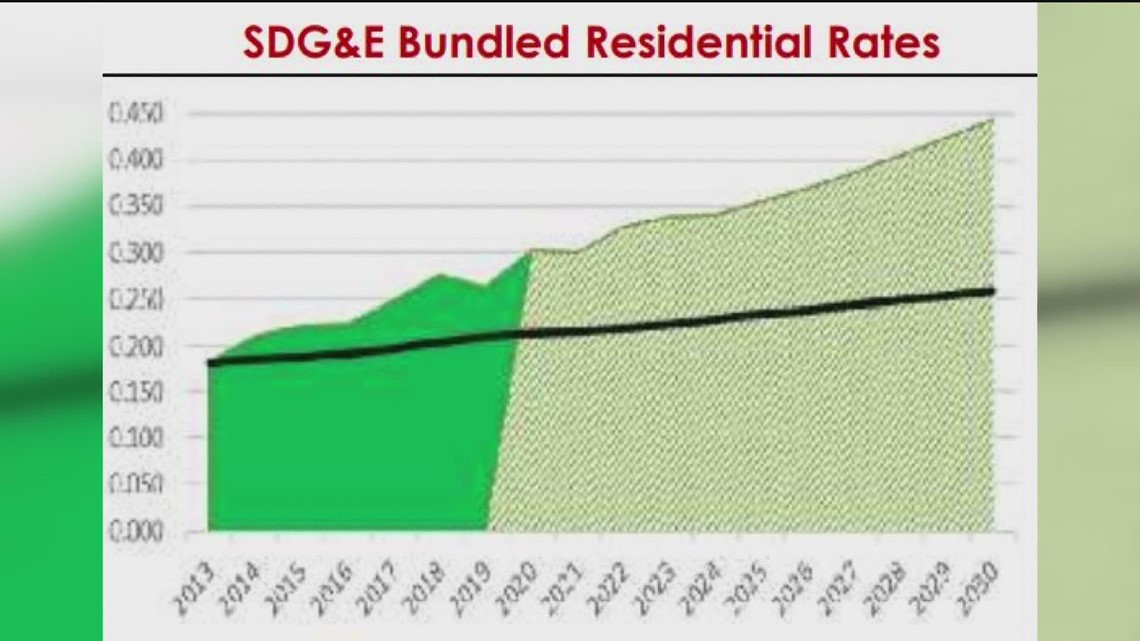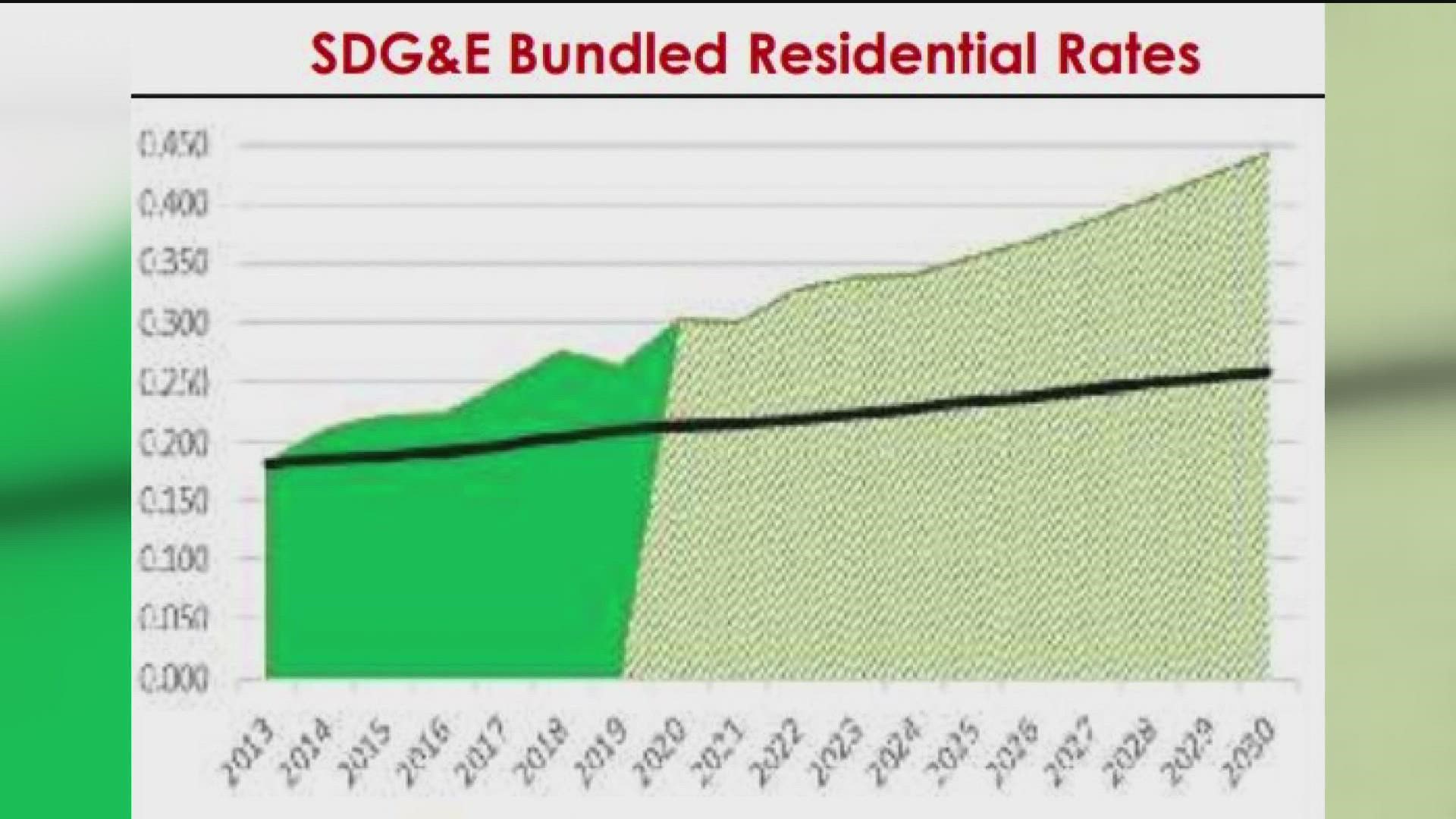SAN DIEGO COUNTY, Calif. — When it comes to outrage over these high bills, CBS 8 is as "Amped Up" as you are and we aren't letting this go, continuing to demand answers for you, until we get them. And if you’d like to give your feedback to SDG&E, you can do so by CLICKING HERE. If you’d like to file a complaint with CPUC, click here.
San Diegans have been shocked by their recent power bills, and now CBS 8 has confirmed that we are paying higher rates than any other city in the country.
According to the US Bureau of Labor Statistics, San Diegans paid an average of 36.5 cents per kilowatt-hour last December. Los Angeles residents paid 34% less (24 cents) and Riverside County paid even less, 23.8 cents per kWh.
“The price per kilowatt is the highest in the country,” said Edward Lopez, Executive Director of Utility Consumers' Action Network (UCAN). “San Diego is even out-passing Hawaii, which is not even on the mainland.”
Lopez is right. Hawaii's average rate was almost 3 cents less per kilowatt-hour than San Diego's rates.
SDG&E declined our request for an on-camera interview but did offer up some explanations over the phone.
A spokesperson pointed to the 2007 wildfires started by the company's power lines. He said that $3 billion has been spent since then hardening their system, including replacing wood poles with steel and undergrounding wires.
“SDG&E has implemented a number of mitigation measures that are good, but remember, SDG&E's customers ultimately pay for this, not the shareholder of SDG&E,” Lopez said.
Lopez questions why ratepayers have to foot the entire bill, getting no help from shareholders.
SDG&E is owned by Sempra, a publicly traded company. In their most recent year-to-year figures, Sempra reported a profit of over $9 billion, but SDG&E recently raised our rates again.
“The profitability, the rate of return that SDG&E gives back to Sempra, is incredible,” Lopez added.
SDG&E is not allowed to simply raise rates on their own, they have to get permission from the California Public Utilities Commission (CPUC).
But Lopez says that the commission seems to always put politics over people. “UCAN has been around for at least three decades and during that time, we consistently argue rates are too high, program costs are too high, profits are too high, but yet the commission never really approves to go backward.”
In a statement to CBS 8, SDG&E said they understand customers' frustrations, adding "While there is never a good time to raise rates, we remain focused on building a safe, climate-resilient and reliable grid that enables our region to reach our sustainability goals."
Lopez pointed CBS 8 to a chart that is actually from the CPUC. It shows SDG&E's rate increases starting in 2013 are expected to outpace inflation by almost 70% by 2030.


WATCH RELATED: San Diegans frustrated with high SDG&E bills say they can't get in touch with company to complain

